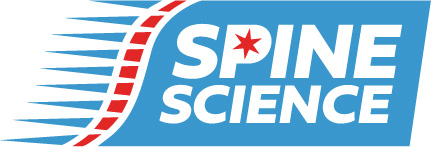Shoulder Stability and Centration
Our shoulder joints are the most mobile joints in our body and allow us the freedom to do our day to day activates and hobbies that we enjoy. What happens when these joints become problematic and even painful? Often we are asked here at the office: why does my shoulder always click, snap and/or pop when I move my arms around? The answer is not always simple because there are many different variables to these audible nuisances. If no pain occurs with the clicking, snapping or popping there is a good chance it is soft tissue related and in some circumstances normal. If pain is present within the glenohumeral joint (shoulder joint), be sure to consult your chiropractor/PCP/PT for further evaluation. Time is of the essence with shoulder complications and if we can catch the problem early the prognosis is more favorable.
The basic anatomy of the shoulder:
Glenohumeral joint stability and mobility is a dominant factor in shoulder health. The shoulder joint complex is made up of three bones, the scapulae (shoulder blade), clavicle (collar bone) and the humerus (aka the funny bone). The scapulae are the winged shaped bones that contact our rib cage on our backs, the clavicle attaches to the scapulae via a bony prominence called the acromion process to form the acromioclavicular joint. The humerus, which is the upper arm bone, articulates with the glenoid fossa. These two bones connect together and articulate at what we commonly call the shoulder joint. In addition to these bones we have numerous muscular attachments and insertions on each one. The muscles have various layers and each one is vital for function.
In order to achieve full range of motion at the shoulder we need the humeral head to rotate on the glenoid fossa within the labrum from 0-120 degrees in shoulder abduction (raising your arm from your side to the ear), in addition we need upward rotation of the scapula 60 degrees to achieve the full 180 degrees of shoulder abduction. In order to achieve this very necessary movement we need both the humerus and the scapula to work in unison. If a discrepancy occurs at either of these articulations then problems often arise. These motions are assessed within our physical exam and treated appropriately through rehabilitation exercises and mobility training.
We tend to train our shoulders in a very global sense, which means we often forget to work the very deep layers of muscles that encompass the rotator cuff of the shoulder which provide us with the appropriate stability. The rotator cuff muscles attach to the humerus and originate on the scapulae. It is vital we keep these muscles strong in order to achieve optimal stability at the glenohumeral joint. Optimal stability at this joint allows us to avoid shoulder complications such as impingement syndromes, AC separations, sprain and strains, labral tears and dislocations. With all the ranges of motion the shoulder provides us, we need to make absolutely certain our functionality is optimal. The ability to control both the raising and lowering motions of the shoulder is vital in performance and safety.
It all comes back to the core and stability motor control of our cylinder (the area from our diaphragm to our pelvic floor). In order to control our limbs in space we must have a strong center. It holds true with our shoulders that if our core is not strong our arms have a flimsy base to work off of, and that produces movement dysfunction which ultimately leads to pain.
We often discuss with our athletes a phrase called the “power leak,” and this is when the core and/or the lower extremities are not strong enough to produce the maximal force output to create more velocity to a fastball, distance off the tee in golf, spiking of a volleyball, etc. We must create a strong center and base to allow for maximal velocity through our upper half and in particular our arms.
Stay Strong,
Dr. Schroeder


